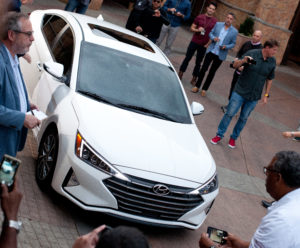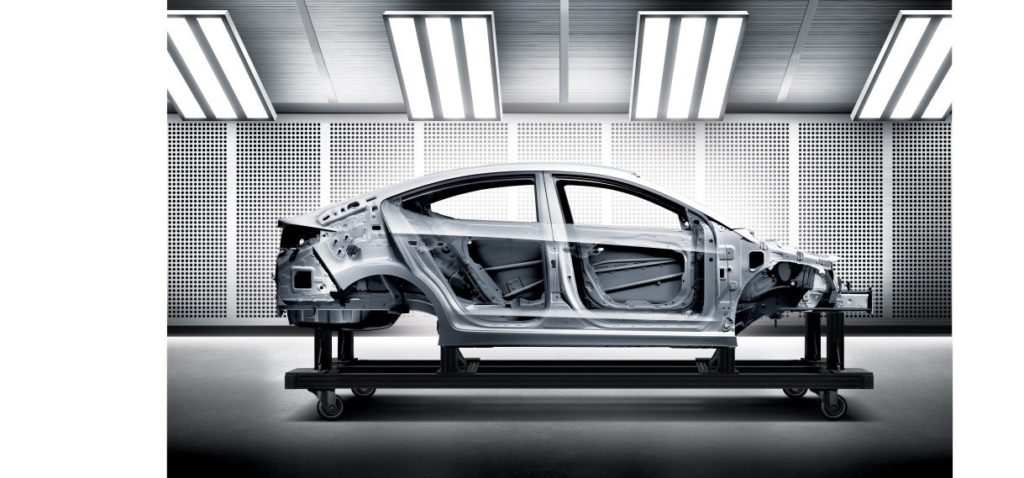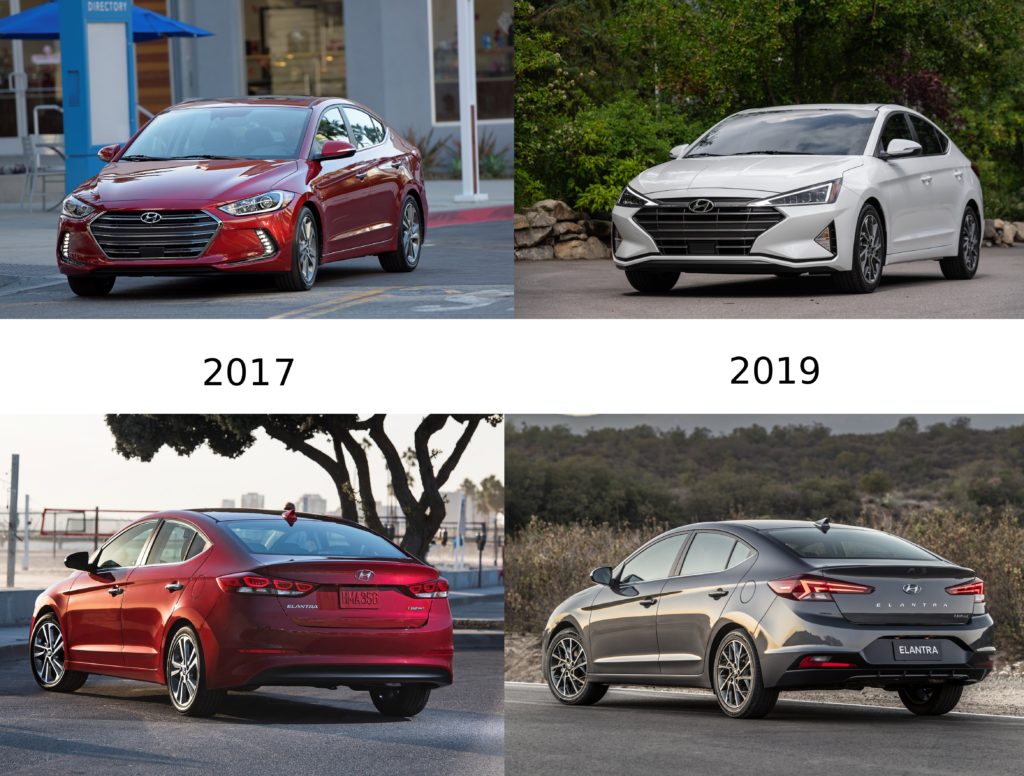
2019 Elantra refresh changes key body areas, adds ADAS option to nearly all trims
By onAnnouncements | Business Practices | Insurance | Market Trends | Repair Operations | Technology
The 2019 Elantra refresh Hyundai announced Wednesday now offers autobraking and other advanced driver assistance systems as options on “75 percent of the Elantra lineup,” carrying the potential for fewer crashes of the popular sedan.
The Elantras which still manage to get into collisions will also offer auto body shops and insurers a redesigned front and rear of the vehicle which changes many collision repair bread-and-butter parts.
The changes come after just two model years of the next-generation Elantra. The design generation which launched in the 2017 model year is notable for its 53 percent advanced high-strength steel and increase of structural adhesive “40 times at higher stress points on the chassis and to reinforce welding areas.”
Hyundai changed the hood, fenders, bumper fascia, grille and headlights in the Elantra’s front and the trunk, taillights and bumper fascia in its rear for the 2019 model year. The higher-tier Limited and Sport trims received LED headlights standard.
“Refinements to both the interior and exterior were initiated on the 2019 Elantra to maintain its emotional design character and include affordable and desired features,” Hyundai product planning director Scott Margason said in a statement. “The hood, front fenders, fascia, grille and headlights as well as the rear fascia, trunk and taillights each have been redesigned to convey a catchy and confident image. On the rear of the vehicle, the license plate has been relocated to the lower fascia to further enhance the new body sculpture.”
Hyundai sold 198,210 Elantras in 2017.
Hyundai in the past had offered a more robust ADAS suite on the Limited trim, but the refresh now features it as an option on the SEL and Value Edition trims as well. The SEL trim started at $18,850 for the 2018 model year. Only the base SE trim, which started at $17,950 for the 2018 model year, omits it.
It’s unclear how pricing will shake out for the ADAS package itself. The Ultimate Package offering ADAS features for the 2018 Hyundai Limited cost $4,350, but this included non-safety-elements as well like a power sunroof and heated rear seats. Hyundai appears to be bundling the safety features into their own package for the 2019 model year, however, which could come with a much lower price tag to stay competitive with OEMs who’ve made ADAS standard.
The “SmartSense” options package now available on the SEL, Value and Limited trims includes autobraking and lane-keeping (at more than 40 mph) as well as a “Driver Attention Assist” feature that alerts the motorist if the vehicle A.I. concludes they’re showing signs of being tired or inattentive.
Buying the 2019 Elantra Limited with the “Ultimate Package” also nets a driver two new ADAS features. “Safe Exit Assist” warns a passenger in a parked car a vehicle is coming from behind and they might not want to open the door yet, and the autobraking feature in that configuration can also detect and brake for pedestrians “in certain circumstances.”
The Insurance Institute for Highway Safety estimates that forward collision warning plus autobraking will cut 50 percent of front-to-rear crashes. Lane departure warning alone will cut 11 percent of various crashes.
While calibration procedures for these new technologies can presumably be found in Hyundai’s mechanical repair instructions, the OEM has yet to issue collision repair manuals in the U.S. This has led some repairers to argue Hyundais are automatic total losses given the potential liability of repairs done solely through educated guess. So in that regard, the refresh might be moot.
Hyundai in 2017 promised repair procedures would be coming soon, and the Society of Collision Repair Specialists and I-CAR have been working with the OEM on the issue.
More information:
“Safety Comes First in the Redesigned 2019 Elantra”
Hyundai, Aug. 23, 2018
Hyundai, Jan. 26, 2016
Images:
The refreshed 2019 Hyundai Elantra is shown. (Provided by Hyundai)
The body-in-white of the 2017 Hyundai Elantra is shown. The vehicle is notable for its 53 percent advanced high-strength steel and increase of structural adhesive “40 times at higher stress points on the chassis and to reinforce welding areas,” according to Hyundai. (Provided by Hyundai)
The 2017 and refreshed 2019 Hyundai Elantra Limited are shown. (Provided by Hyundai)


